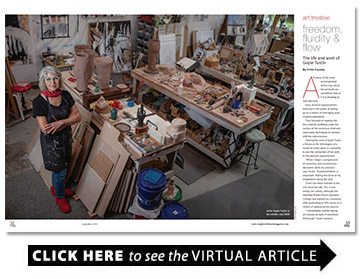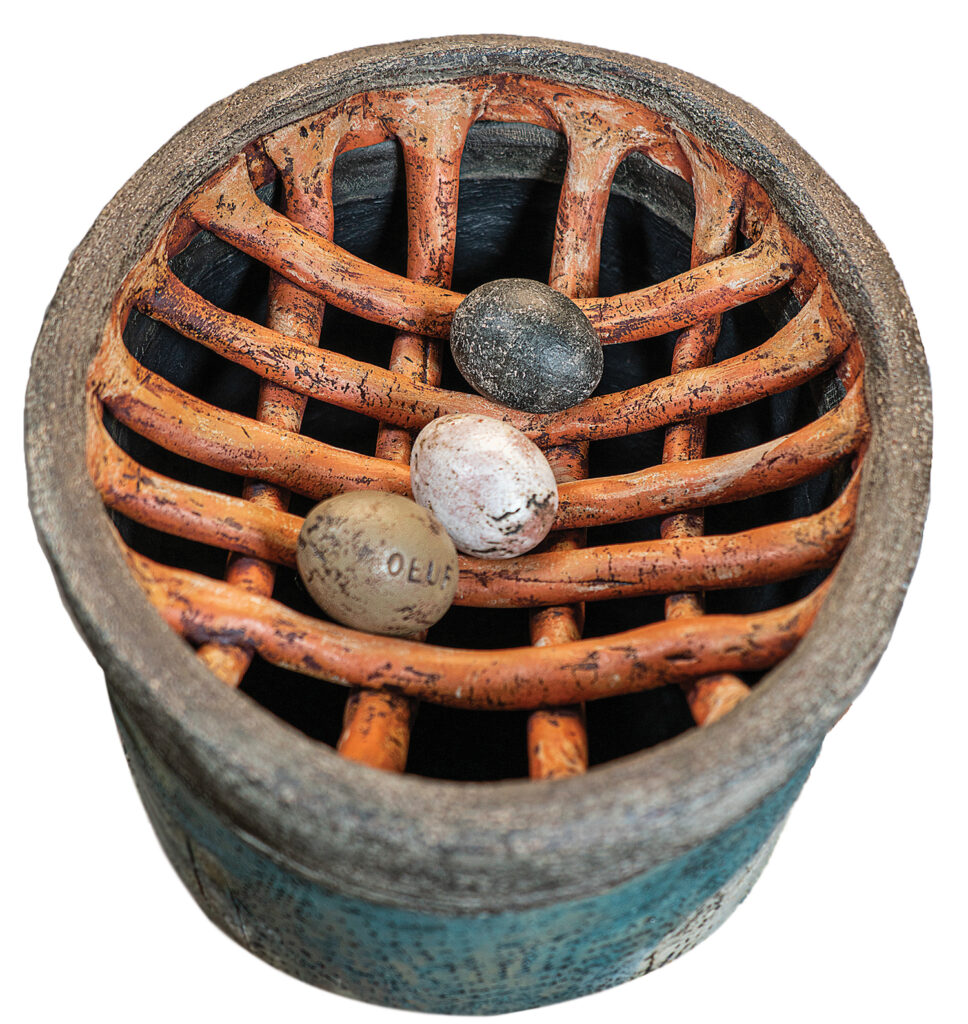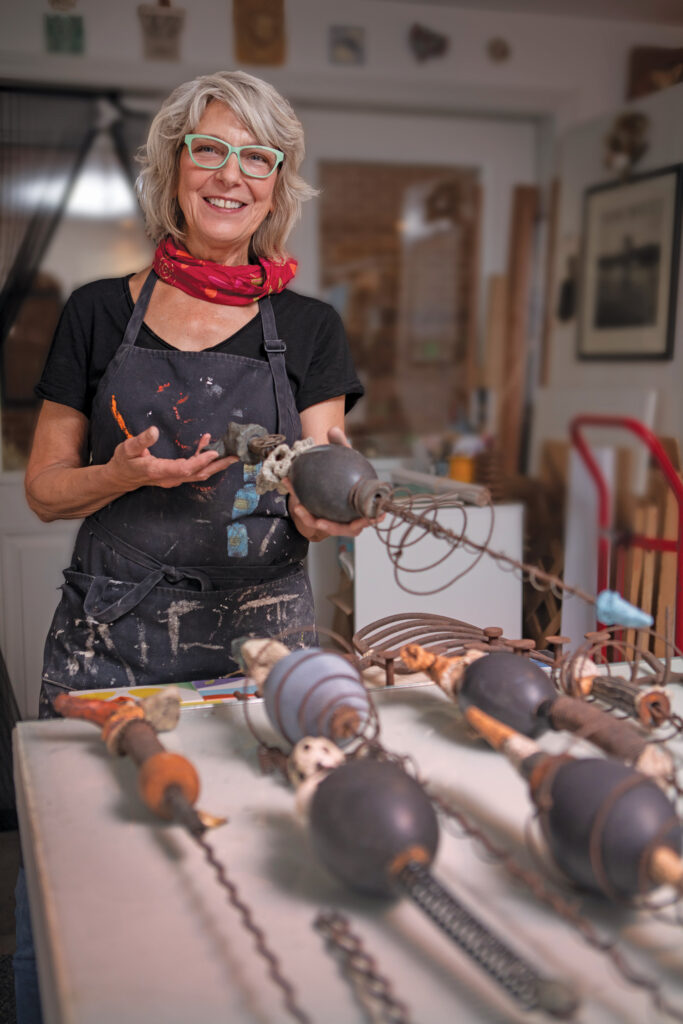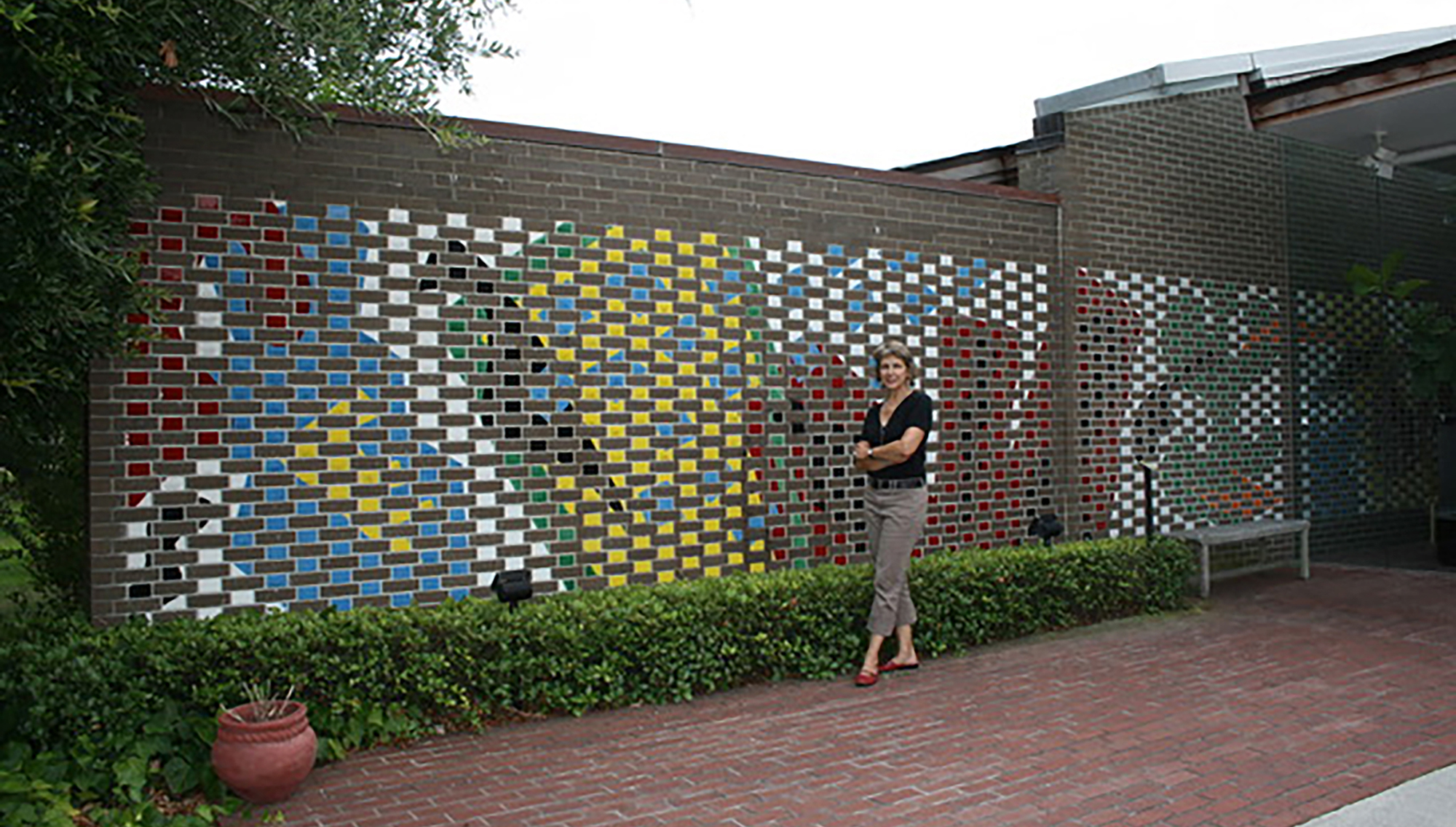Freedom, Fluidity and Flow
The life and work of Gayle Tustin
BY Fritts Causby
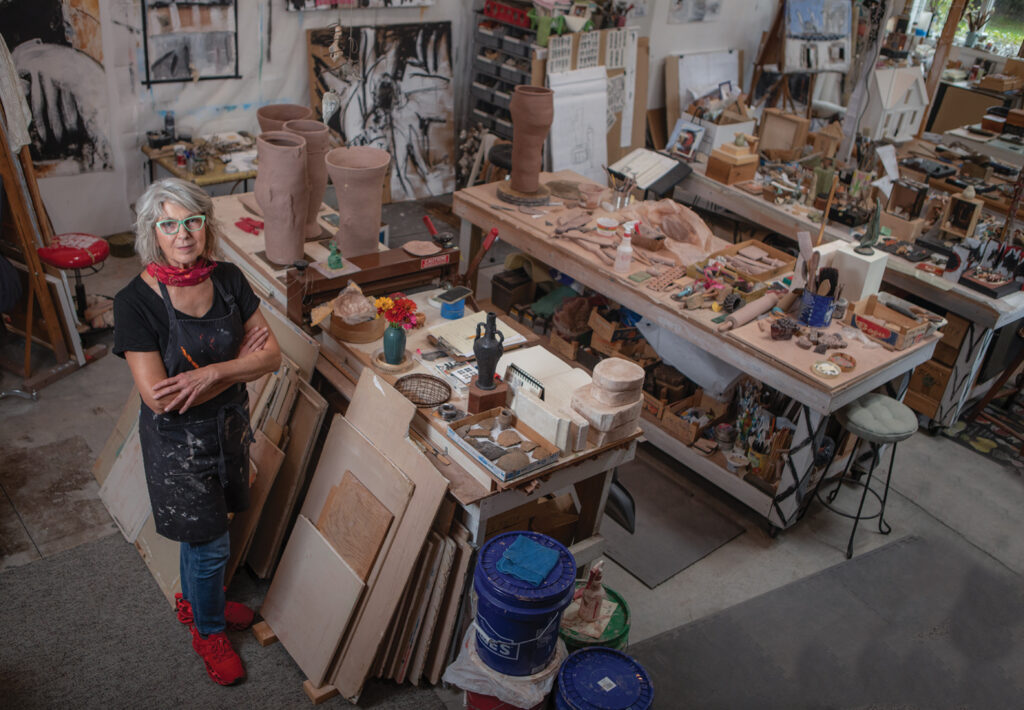
As many of the most accomplished artists may attest, the art itself can sometimes feel as if it is dictating its own direction.
Early abstract expressionists believed in the power of letting go as a means of leveraging pure creative expression.
They focused on tapping into the creativity bubbling under the surface of the conscious mind and used many techniques to connect with the subconscious.
Viewing the work of Gayle Tustin, a fixture on the Wilmington arts scene for many years, it is possible to see the connection of her work to the abstract expressionists.
“When I begin, a progression of conscious and unconscious decisions starts my process,” says Tustin. “Experimentation is important, feeling the force of my imagination along the way.”
Tustin has been involved in the arts since the late ’70s. It was simply her calling, although she attended Robert Morris Business College and worked as a secretary after graduating in 1974, partly as a means of appeasing her parents.
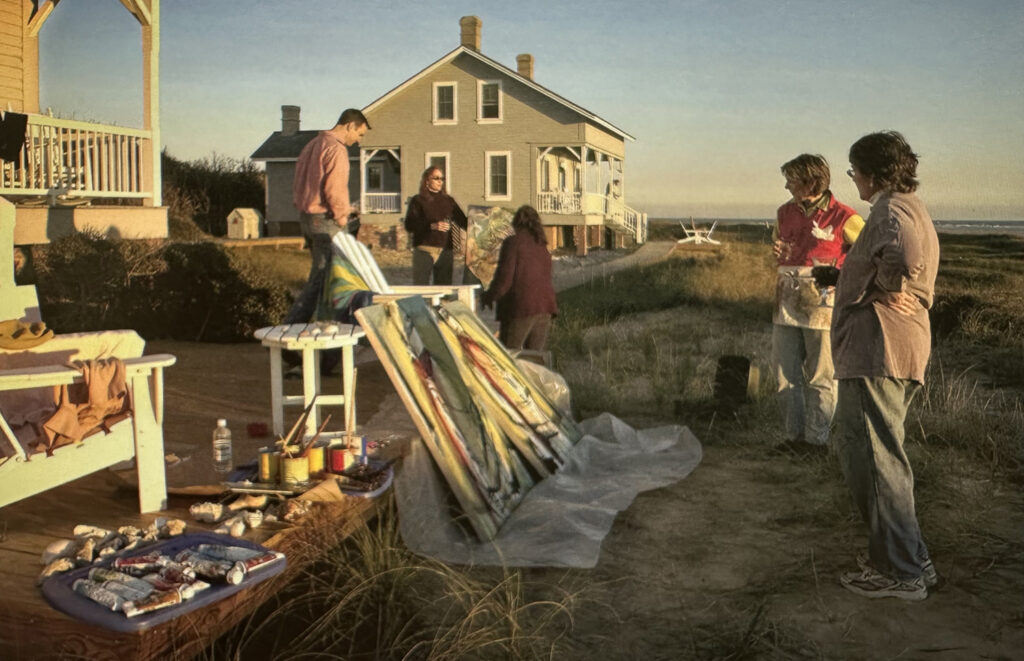
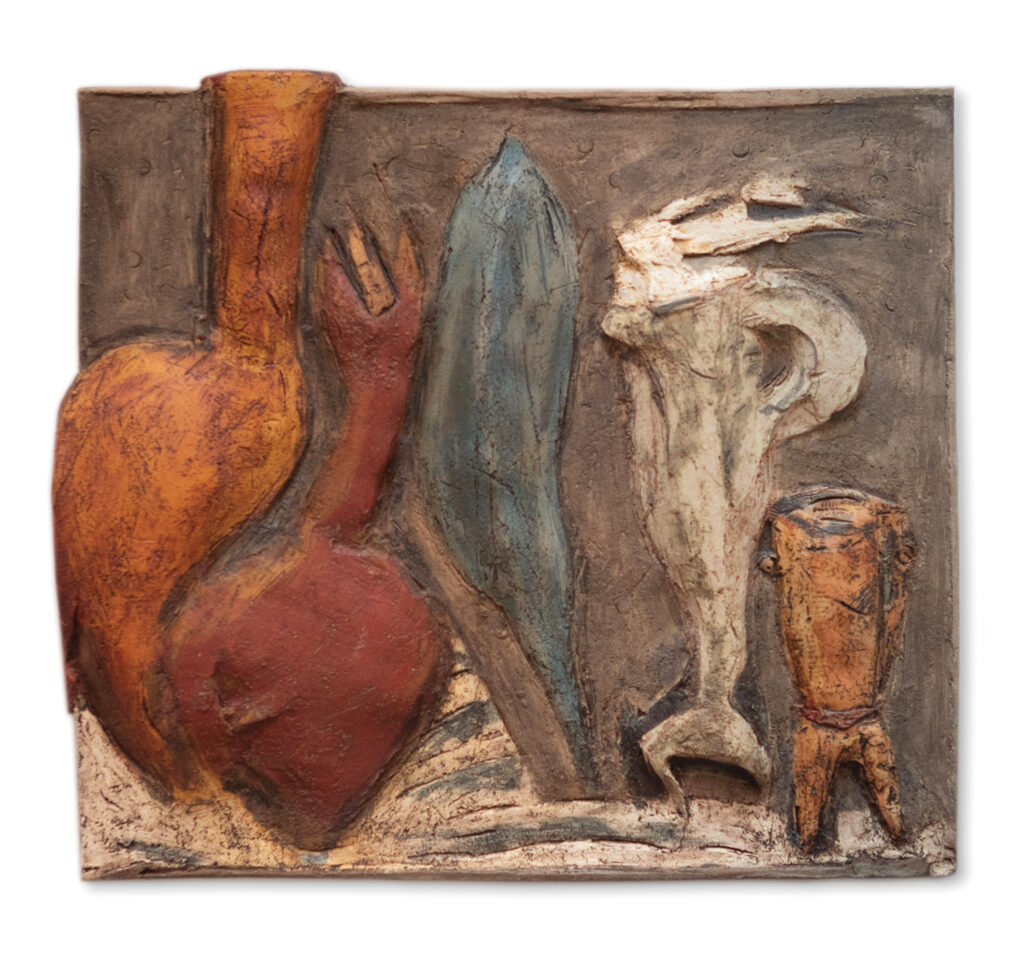
“I immediately started taking art classes at night in downtown Pittsburgh,” Tustin explains.
She moved around a lot before landing in Wilmington in 1988.
“It was a very exciting time, meeting a lot of young artists that were also moving here,” she says. “We were all in our 30s. We started a drawing group and we’d get together and critique our work. It was really great.”
Shortly after relocating, Tustin enrolled at the University of North Carolina Wilmington, where she became the first to graduate with honors from the studio art department. Not long after she got together with friends and fellow artists Pam Toll and Dick Roberts to establish No Boundaries International Art Colony, now known as No Boundaries International Art Residency (NBIAR) on Bald Head Island.
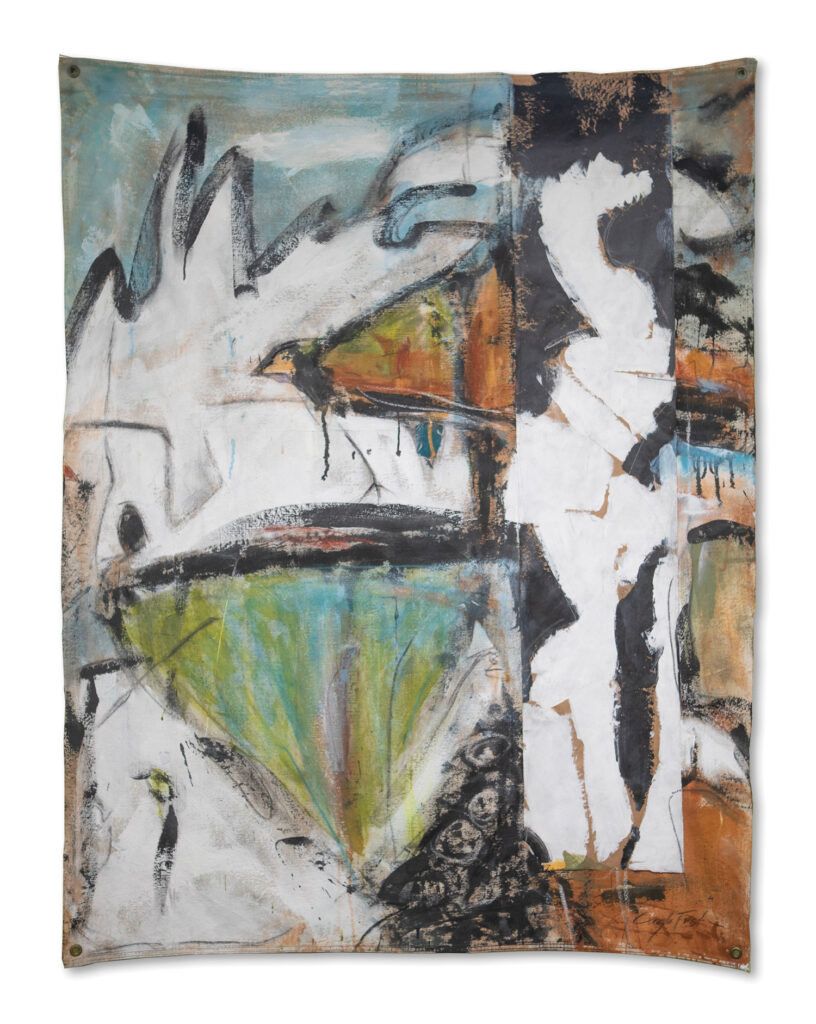
The nonprofit provides artists from the United States and abroad with the time, place and means to create and collaborate with their peers for two weeks each year.
“Participating in art colonies opens you up to experiences in other parts of the world,” says Tustin. “You learn from the other artists. I learned a lot about letting go — what happens, happens. If you don’t like it paint over it, and if you don’t like that, paint on top of it again.”
“We modeled our colony after the colonies in Macedonia, where you pay your airfare, and they take care of you for two weeks with art supplies and food. You just have to leave two paintings behind,” says Tustin, who now serves No Boundaries as a silent board member.
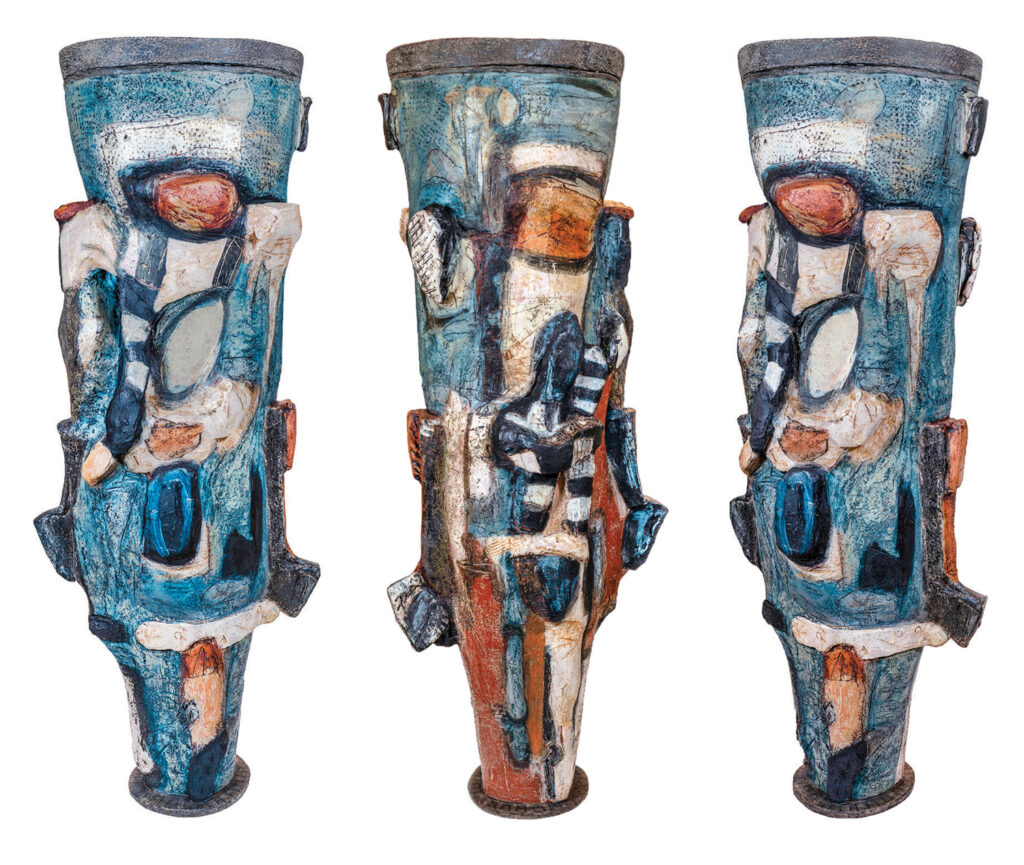
Visits to North Macedonia do not paint a complete picture of Tustin’s connection to the world of the Greco-Romans. She works in a variety of mediums as a sculptor, painter, and collage and assemblage artist — creating mixed media art with acrylic and oil paint, graphite, collage, sgraffito, sewing, found objects, birch bark, India ink and even sailing charts.
One of her favorite ways to work in clay involves the use of terra sigillata.
Terra sigillata, which translates to sealed earth, is a fine clay liquid made by mixing clay powder, water and a deflocculent. “Terra sig” is applied to the dry clay work and burnished for the first kiln firing. Before the second firing, colored oxides are applied to enhance the texture. It allows the original visual and tactile surface to remain intact in the finished work, and has a matte or satin finish.
“My clay process has various steps, with some pieces taking months to complete,” says Tustin. “The ceramic works are multi-kiln fired with terra sigillata and oxide patinas as well as silica glazes. They have an ancient look and feel about them.”
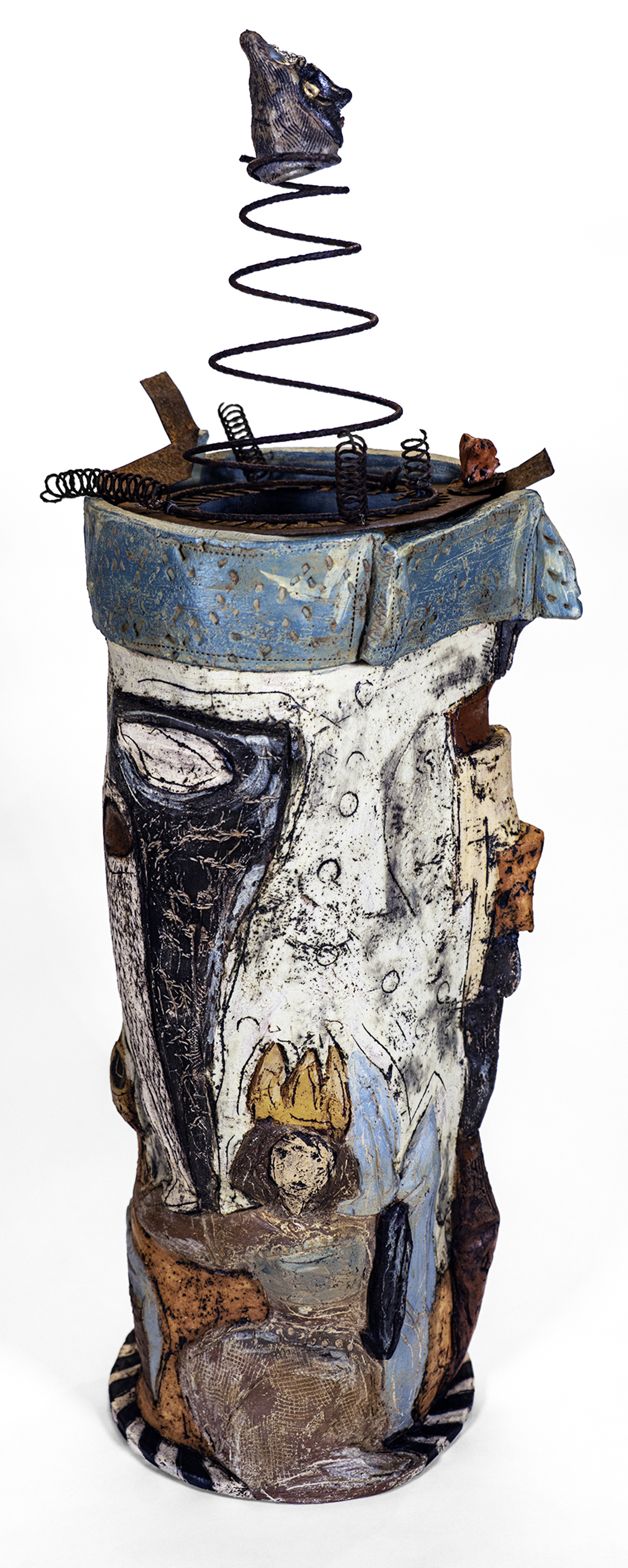
Tustin’s work ranges from ceramic vessels and wall tiles; paintings, collage and sculpture; reinvigorated cigar boxes, assemblage pieces with found elements; and clay beads for necklaces.
“I was given some emu eggs, and I had been working on all these mixed metal assemblages, not knowing what I was going to do with them,” she says, referring to her “Water Seekers” (aka water divining rods). “Many of them have spring parts that give them playful movement.”
Tustin also is creating mixed media art on discarded painter’s canvases and cardboard.
“I’m sewing on cardboard and painting on cardboard,” says Tustin. “I’ve been working on tarps and loose canvas, just because I like a little bit of movement. It takes away from the stiffness of stretched canvas.”
Tustin finds inspiration from the environment, walking, traveling and sketching. Books, conversations, trash on the street, gestures, swimming and antique stores are other sources. Sometimes her ideas are planned out in the sketchbook, but more often her process represents a spontaneous flow.
“When I’m working, I pretty much let the piece tell me what it wants to do,” says Tustin. “I am interested in many things, so I’ll never stop working. That’s one of the great advantages about being an artist — you’re not thinking about retiring — you are thinking more about your next creations.”
Her work can be viewed on her social media (Instagram: @gayle_tustin) and in person at the Art in Bloom Gallery, where she has an upcoming show in early October.
Gayle Tustin’s Large Public Works in North Carolina
We are the People of North Carolina
Three relief panel sculptures depicting all races, ages, professions and more in red earthenware with terra sigillata. Located at the North Carolina State Bar Foundation, Raleigh.
Celebration of Life I – III
Over 2,000 glazed porcelain tiles with donor/memorial names in abstract design. Located at the Lower Cape Fear Hospice, Wilmington. See Wrightsville Beach Magazine’s December 2016 issue, pages 16-18.
Bountiful Life I-VI
Over 1,000 donor/memorial tiles in six murals each depicting local flora and crops: magnolias, hydrangeas, strawberries, blueberries, corn and cotton. Located at the Lower Cape Fear Hospice, Whiteville.
With Compassionate Care and Landscapes from Memory
Three relief panel sculptures in red earthenware with sigilatta located at Novant Health/Forsyth Medical Center, Winston-Salem.
